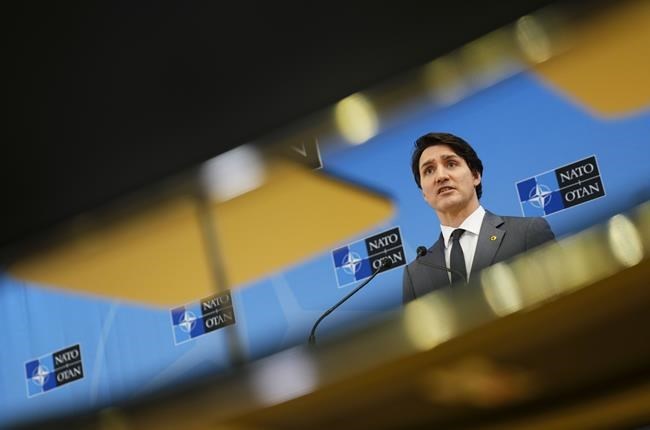OTTAWA ÔÇö A new NATO report suggests that while most other allies have started to invest more in defence, sa╣·╝╩┤½├¢ is even farther from meeting the military alliance's spending target than previously believed.
The report from NATO Secretary General Jens Stoltenberg also shows sa╣·╝╩┤½├¢ falling farther behind allies in terms of the share of national gross domestic product spent on the military.
The latest figures are likely to spark fresh debate on the state of Canadian military spending, particularly in the context of RussiaÔÇÖs invasion of Ukraine, which has shaken long-held perceptions about international order and security.
They could also add more pressure on the Liberal government to inject new funds into the military at a time when it has promised considerable new spending on social programs such as universal pharmacare in exchange for the NDPÔÇÖs support in Parliament
The latest NATO figures indicate sa╣·╝╩┤½├¢ spent 1.36 of its GDP on defence last year. That represents a decline from the allianceÔÇÖs previous estimate of 1.39 per cent for 2021, which it had published in June.
Defence Department spokesman Andrew McKelvey attributed the decline to changes in sa╣·╝╩┤½├¢'s GDP projections.
"The fluctuation in the NATO estimate since June 2021 is the result of changing GDP forecasts, due to the economic impact of the COVID-19 pandemic and current economic recovery," he said in an email.
"When GDP increases, the percentage of that figure represented by defence spending is lower ÔüáÔÇö and vice versa."┬á
While the difference appears miniscule, it nonetheless moves sa╣·╝╩┤½├¢ farther from the two per cent spending target all members agreed to in 2014 and reaffirmed during a special leadersÔÇÖ summit in Brussels last week.
The decline also leaves sa╣·╝╩┤½├¢ firmly near the back of the alliance in terms of defence spending, with only four members projected to have spent less as a share of their GDP on defence last year: Belgium, Luxembourg, Slovenia and Spain.
That compared to 10 in 2020, when sa╣·╝╩┤½├¢ spent 1.44 per cent of its GDP on the military.┬á
Asked about the revised figure, Defence Minister Anita Anand referred to Prime Minister Justin TrudeauÔÇÖs promise at last weekÔÇÖs NATO summit in Brussels that sa╣·╝╩┤½├¢ would increase its military spending.
The prime minister at that time offered only vague suggestions on how the government would achieve the objective.
His comments came after NATO Secretary General Jens Stoltenberg said allies had agreed to "redouble" efforts to reach the two per cent target and submit plans on how to meet the pledge at a June meeting in Madrid, Spain.
ÔÇ£We will continue to increase defence spending,ÔÇØ Anand said Thursday. ÔÇ£And we are engaged in a budgetary process right now. And that process needs to take its course. And as we know, we will see a budget on April 7.ÔÇØ
The defence minister added she is working on a ÔÇ£robustÔÇØ plan to modernize the North American Aerospace Defence Command, the joint U.S.-Canadian network that serves as the backbone for defending North America from attack.
Dedicating money to Norad modernization, which includes replacing a series of 1980s-era radar installations in sa╣·╝╩┤½├¢ÔÇÖs Far North, would be one of the easiest ways that the government could inject more funds into the military.
The project is a priority, especially in the context of tensions with Russia, and was not included in the LiberalsÔÇÖ 2017 defence policy.
But experts have said sa╣·╝╩┤½├¢ would have to add $16 billion per year to its $30-billion defence budget to reach the two per cent figure, a number that would be impossible to achieve in the short term and require a significant rethink of its defence policy.
This report by The Canadian Press was first published March 31, 2022.
Lee Berthiaume, The Canadian Press



